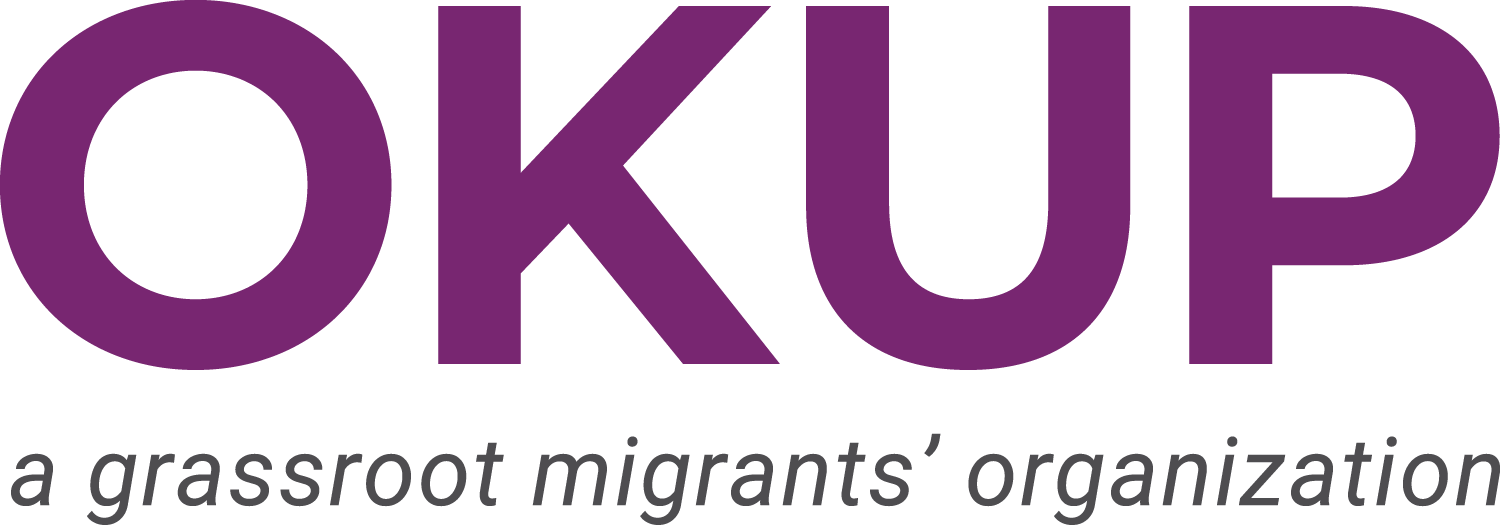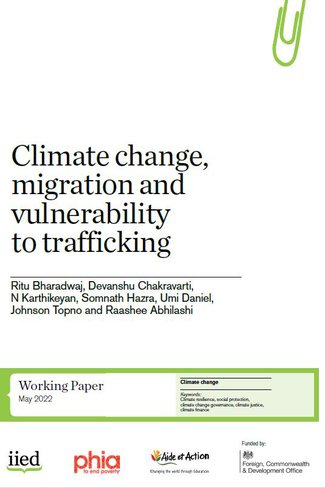Climate Change, Migration and Vulnerability to Trafficking (Kendrapara, India)
2022
- Author
- Bharadwaj R, Chakravarti D, Karthikeyan N, Hazra S, Daniel U, Topno J and Abhilashi R (IIED)
- World region
- South Asia
- Origin of migration
- Odisha region, Kendrapara district in India
- Area of transit
- No data available
- Destination of migration
-
South India - Tamil Nadu, Kerala, Mumbai, Bangalore, Hyderabad, Prune, Andhra Pradesh, Maharashtra.
Gulf Cooperation Countries: Qatar, UAE - Who is affected
- Girls, Men, Women
- Type of climatic event
-
Rapid-onset event
Floods and cyclones are major climate-related stressors, with droughts and irregular rainfall also cited. Climate change events result in loss and damage, reducing household income. Climate change also impacts the availability of forest resources and water, harming people's livelihood opportunities and means of survival. A 2013 study on the region found that households headed by women were more negatively affected by climate change.
- Type of migration/mobility
-
Cross-border, Internal (but intra-state), Rural to rural, Seasonal
Men with primary and secondary education are the most likely to migrate. When girls and women migrate, they are more likely to do so with their families. Children may also migrate alone and send remittances home. While children may migrate with their parents, when parents are migrating for work other than agriculture work, children tend to stay back. People most often migrate for work, with other drivers being housing and education.
- Destination industry or sector
-
Construction, Manufacturing
*Manufacturing (other areas of work, not signalled as sectors of forced labour: fishing, livestock, crop farming, domestic work)
- Type of modern slavery
-
Human trafficking
- Link between climate change, migration and modern slavery
- Indirect
- Key vulnerability factors
-
Existing factors that expose people to human trafficking risks are amplified by the effects of climate change. Caste- and class-based discrimination restricts access to resources and, like gender inequality, increases people's exposure to human trafficking. Vulnerability to distress migration and human trafficking is increased by debt, food insecurity, unemployment, loss and damage, and inadequate social protection mechanisms. Local conflicts can also worsen this vulnerability. Undocumented migrants are more vulnerable to human trafficking.
- Summary
-
This report explores the links between climate change, migration and human trafficking in two distinct areas in India, one affected by slow-onset events and one by rapid-onset events. It finds that climate change has become a new driver of migration and human trafficking. When migration occurs under distress, people are at greater risk of human trafficking. More research is needed on the factors that expose people to human trafficking, why they are pulled towards unsafe migration routes and gaps in social protection during climate events.
- Recommendations
-
Recommendations at the sub-national, national and international level highlight the importance of adaptation solutions for local communities, safe migration options, access to social protection and safety nets, the consideration of human trafficking in development planning, and local research and evidence.



